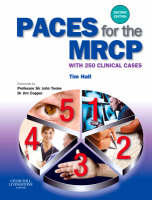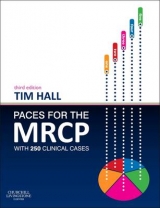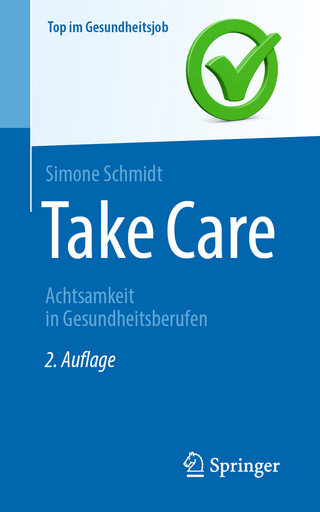
PACES for the MRCP
Churchill Livingstone (Verlag)
978-0-443-10370-4 (ISBN)
- Titel erscheint in neuer Auflage
- Artikel merken
This is - British Medical Association Book Awards 2009 - highly commended medicine title. Clinical examinations in the OSCE style of marked stations are daunting for all students, whether undergraduates or MRCP candidates. The recent introduction of the 5-station PACES (Progressive Assessment of Clinical Examination Skills) exam inspired a great deal of apprehension, so the appearance of the first edition of Hall's "PACES for the MRCP" was greatly welcomed by candidates and became an immediate success. This new edition builds on the book's reputation. It provides, in one colourful and attractive volume, complete coverage of all the most common medical cases that will be covered in PACES and similar exams. Although designed specifically for the PACES part of the MRCP exam, its in-depth coverage means that it can be used by any student preparing for clinical examinations in medicine.
INTRODUCTION STATION 1 RESPIRATORY AND ABDOMINAL SYSTEM RESPIRATORY SYSTEM Examination of the respiratory system Cases 1.1Chronic obstructive pulmonary disease 1.2Consolidation 1.3Dullness at the lung base 1.4Pneumonia 1.5Lung cancer 1.6Pancoast's syndrome 1.7Superior vena cava obstruction 1.8Collapse/pneumonectomy/lobectomy 1.9Bronchiectasis 1.10Cystic fibrosis 1.11Kartagener's syndrome 1.12Tuberculosis 1.13Idiopathic pulmonary fibrosis and diffuse parenchymal lung disease 1.14Rheumatoid lung 1.15Extrinsic allergic alveolitis 1.16Asbestos-related lung diseaseand pneumoconiosis 1.17Pulmonary sarcoidosis 1.18Pulmonary hypertension 1.19Cor pulmonale 1.20Pulmonary embolism 1.21Pleural effusion 1.22Pleural rub 1.23Pneumothorax 1.24Obstructive sleep apnoea-hypopnoea syndrome 1.25Lung transplant ABDOMINAL SYSTEM Examination of the abdominal system Cases 1.26Chronic liver disease 1.27Jaundice 1.28Ascites 1.29Alcoholic liver disease 1.30Viral hepatitis 1.31Autoimmune hepatitis 1.32Primary biliary cirrhosis 1.33Hereditary haemochromatosis 1.34Wilson's disease 1.35Hepatomegaly 1.36Splenomegaly 1.37Hepatosplenomegaly 1.38Felty's syndrome 1.39Abdominal mass 1.40Crohn's disease 1.41Ulcerative colitis 1.42Carcinoid syndrome 1.43Enteric and urinary stomas 1.44Chronic myeloid leukaemia 1.45Polycythaemia vera, myeloproliferative disorders and myelodysplasia 1.46Chronic lymphocytic leukaemia 1.47Lymphadenopathy and lymphoma 1.48Polycystic kidney disease 1.49Nephrotic syndrome 1.50Renal transplant STATION 2: HISTORY-TAKING SKILLS Introduction to history-taking skills Clinical reasoning The traditional medical history model Incorporating the patient's perspective - ideas, concerns and expectations History-taking skills - the communication skills that make history-taking effective The traditional model and communication skills - putting these two together Cases Respiratory problems 2.1Breathlessness 2.2Asthma Abdominal problems 2.3Dyspepsia 2.4Dysphagia 2.5Abdominal pain 2.6Altered bowel habit Cardiovascular problems 2.7Prevention of cardiovascular disease and weight gain 2.8Chest pain and angina 2.9Acute coronary syndrome 2.10Heart failure 2.11Palpitations 2.12Atrial fibrillation 2.13Dyslipidaemia 2.14Hypertension Neurological problems 2.15Headache 2.16Transient ischaemic attack 2.17Weakness and wasting 2.18 TMultiple sclerosis 2.19 Tremor Locomotor problems 2.20Back pain 2.21Joint pain Eye problems 2.22Visual loss Endocrine problems 2.23Type 1 diabetes mellitus 2.24Type 2 diabetes mellitus Renal and metabolic problems 2.25Acute renal failure 2.26Chronic kidney disease and renal replacement therapy 2.27Glomerulonephritis 2.28Systemic vasculitis 2.29Hypercalcaemia 2.30Hyponatraemia 2.31 Poisoning and metabolic disturbance Haematological problems 2.32Anaemia 2.33Sickle cell disease and thalassaemia 2.34Purpura 2.35Haemophilia 2.36Deep vein thrombosis 2.37Thrombophilic tendency 2.38Myeloma Infectious disease 2.39Human immunodeficiency virus infection Other general internal medicine and elderly care problems 2.40Falls and rehabilitation 2.41Syncope 2.42Seizures 2.43Acute confusion 2.44Mild cognitive impairment and dementia 2.45Incontinence 2.46Raised inflammatory markers 2.47Polymyalgia and giant cell arteritis 2.48Pyrexia and sepsis 2.49Weight loss 2.50Tiredness STATION 3: CARDIOVASCULAR SYSTEM AND NERVOUS SYSTEM CARDIOVASCULAR SYSTEM Examination of the cardiovascular system Cases 3.1Mitral stenosis 3.2Mitral regurgitation 3.3Aortic stenosis 3.4Aortic regurgitation 3.5Tricuspid regurgitation and Ebstein's anomaly 3.6Other right-sided heart murmurs 3.7Mixed valve disease 3.8Mitral valve prolapse 3.9Prosthetic valves 3.10Permanent pacemaker 3.11Infective endocarditis 3.12Congenital heart disease 3.13Cyanotic heart disease 3.14Hypertrophic (obstructive) cardiomyopathy 3.15Pericardial rub and pericardial disease NERVOUS SYSTEM Examination of the nervous system - Overview of the organisation of the nervous system and how to examine it - Cranial nerves - Higher cortical function and specific lobes - Speech and language - Power and sensation - Upper limbs - Lower limbs - Gait Cases 3.16Visual field defects 3.17Ocular nerve lesions 3.18Internuclear ophthalmoplegia 3.19Nystagmus 3.20Ptosis 3.21Large pupil 3.22Small pupil 3.23Horner's syndrome 3.24Cerebellopontine angle syndrome 3.25Facial nerve palsy 3.26Bulbar palsy 3.27Anterior circulation stroke syndromes 3.28Dysphasia and dysarthria 3.29Pseudobulbar palsy 3.30Agnosias and apraxias 3.31Posterior circulation stroke syndromes 3.32Parkinson's disease 3.33Cerebellar disease 3.34Spastic paraparesis and Brown Sequard syndrome 3.35Syringomyelia 3.36Absent ankle jerks and extensor plantars 3.37Motor neurone disease 3.38Cervical myeloradiculopathy 3.39Cauda equina syndrome 3.40Carpal tunnel syndrome (median nerve lesion) 3.41Ulnar nerve lesion 3.42Radial nerve lesion 3.43Wasting of the small (intrinsic) muscles of the hand 3.44Common peroneal nerve lesion 3.45Peripheral neuropathy 3.46Charcot-Marie-Tooth disease and hereditary neuropathies 3.47Guillain-Barre syndrome 3.48Myasthenia gravis 3.49Myotonic dystrophy STATION 4: COMMUNICATION SKILLS AND ETHICS COMMUNICATION SKILLS AND ETHICS Introduction to communication skills and ethics Cases Discussing clinical management 4.1Explaining a diagnosis 4.2Explaining an investigation 4.3Discussing a treatment 4.4Discussing management, prognosis and possible complications in a patient with multiple problems 4.5Discussing diagnostic uncertainty 4.6Discussing risk and treatment effect 4.7Negotiating a management plan for a chronic disease/long-term condition 4.8Encouraging concordance with treatment and prevention Communication in special circumstances 4.9Cross-cultural communication 4.10Communicating with angry patients or relatives 4.11Communicating with upset and distressed relatives 4.12Discharge against medical advice 4.13Delayed discharge Breaking bad news 4.14Cancer - potentially curable 4.15Cancer - likely incurable 4.16Cancer - patient not fit for active treatment 4.17Chronic disease 4.18Discussing an acutely terminal situation with relatives Confidentiality, consent and capacity 4.19Legal points in confidentiality 4.20Breaching confidentiality when a third party may be at risk 4.21Breaching confidentiality in the public interest 4.22Confidentiality when talking with relatives and other third parties 4.23Consent for investigation or treatment 4.24Consent and capacity 4.25Refusal to consent 4.26Deliberate self-harm End of life issues 4.27Resuscitation-status decision-making discussion with patient 4.28Resuscitation status decision-making discussion with relative 4.29Appropriateness of intensive therapy unit transfer 4.30Withholding and withdrawing life-prolonging treatments - Artificial hydration and nutrition 4.31Withholding and withdrawing life-prolonging treatments - antibiotics and drugs 4.32Percutaneous endoscopic gastrostromy feeding 4.33Palliative care 4.34Advance directives/decisions 4.35Persistent vegetative state 4.36Brainstem death 4.37 Discussing live organ donation 4.38Requesting an autopsy (post-mortem) Clinical Governance 4.39Critical incident 4.40Managing a complaint and the question of negligence 4.41Fitness to practice - poor peformance in a colleague 4.42Fitness to practice - misconduct in a colleague 4.43Fitness to practice - health problems in a colleague 4.44Recruitment to a randomised controlled trial Other communication, ethical and legal scenarios 4.45Genetic testing 4.46HIV testing 4.47Needlestick injury 4.48Medical opinion on fitness for anaesthesia 4.49Fitness to drive 4.50Industrial injury benefits STATION 5: SKIN, LOCOMOTOR SYSTEM, EYES, ENDOCRINE SYSTEM SKIN Examination of the skin Cases 5.1Psoriasis 5.2Dermatitis 5.3Lichen planus 5.4Blistering skin condititions 5.5Facial rash 5.6Scleroderma, vitiligo and autoimmune skin disease 5.7Oral lesions 5.8Nail lesions 5.9Shin lesions 5.10Neurofibromatosis 5.11Tuberose sclerosis 5.12Neoplastic skin lesions 5.13Skin vasculitis 5.14Xanthomata and xanthelasmata 5.15Skin and soft tissue infection LOCOMOTOR SYSTEM Examination of the joints Examination of the hands and arms Examination of the legs Examination of the spine Cases 5.16Rheumatoid hands and rheumatoid arthritis 5.17Ankylosing spondylitis and spondyloarthropathies 5.18Systemic lupus erythematosus 5.19Scleroderma 5.20Crystal arthropathy 5.21Osteoarthritis 5.22Paget's disease 5.23Marfan's syndrome 5.24Ehlers-Danlos syndrome 5.25Osteogenesis imperfecta EYES Examination of the eyes Cases 5.26Diabetic retinopathy 5.27Hypertensive retinopathy 5.28Swollen optic disc and papilloedema 5.29Optic atrophy 5.30Chorioretinitis 5.31Retinitis pigmentosa 5.32Central retinal vein occlusion 5.33Central retinal artery occlusion 5.34Retinal detachment and vitreous haemorrhage 5.35Drusen and age-related macula degeneration (asteroids) 5.36Angioid streaks 5.37Myelinated nerve fibres 5.38Glaucoma 5.39Cataracts 5.40Uveitis and red eye ENDOCRINE SYSTEM Examination of the thyroid Cases 5.41Hyperthyroidism and Grave's disease 5.42Hypothyroidism 5.43Goitre and neck lumps 5.44Acromegaly 5.45Hypopituitarism 5.46Cushing's syndrome 5.47Hypoadrenalism and Addison's disease 5.48Hirsutism and polycystic ovarian syndrome 5.49Hypogonadism and gynaecomastia 5.50Pseudohypoparathyroidism APPENDIX 100 tips for passing PACES INDEX
| Erscheint lt. Verlag | 23.7.2008 |
|---|---|
| Reihe/Serie | MRCP Study Guides |
| Zusatzinfo | Approx. 390 illustrations (300 in full color) |
| Verlagsort | London |
| Sprache | englisch |
| Maße | 246 x 189 mm |
| Themenwelt | Medizin / Pharmazie ► Allgemeines / Lexika |
| Medizin / Pharmazie ► Studium | |
| ISBN-10 | 0-443-10370-4 / 0443103704 |
| ISBN-13 | 978-0-443-10370-4 / 9780443103704 |
| Zustand | Neuware |
| Haben Sie eine Frage zum Produkt? |
aus dem Bereich



